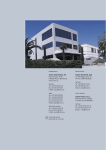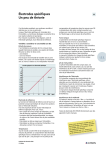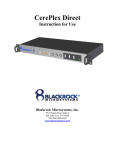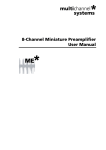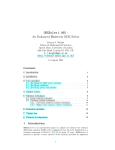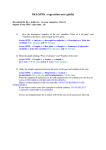Transcript
Ion-selective electrodes. A little theory These are electrodes with a sensitive membrane, selective for a particular ion. When the selective electrode is immersed in the sample, a potential develops in the membrane, caused by a selective and spontaneous reaction. To measure this potential a reference electrode is required alongside the indicator selective electrode. Variables to be considered when measuring with an ISE. Measuring range This is the scale of concentration of the ion to be measured in which the electrode is sensitive to variations. It can be divided into two areas: - Linear area - Non-linear area Working within the linear area is always preferred, because the non-linear area requires calibration using at least 5 standards and manual interpolation. �� ��� � �� ��� ���� ���� Reference electrode The reference electrode provides a constant potential against which variations due to the indicator electrode can be measured. It is very important to select an appropriate reference electrolyte, for which the user should bear in mind: - The ionic strength of the electrolyte should be much higher than that of the sample. - It should be an equi-transferrent solution. The cation and anion speeds should match as far as possible. - It should not react with the sample. - It should not contaminate the sample. It should never contain the ion to be measured. Temperature Everyone knows what temperature does to measurements of potential. The behaviour of selective electrodes with variations in temperature is not as well-known as that of pH electrodes, which is why we do not refer to compensation for temperature in measurements with ISE’s. Laboratory Catalogue 2004 1st Edition Ionic strength The potential of selective electrodes responds to ion activity, not concentration For ion activity and concentration to be similar, an ionic strength adjuster (ISA) is added both to the standards and to the samples. An Ionic Strength Adjuster, ISA, is a solution with a high ionic strength which does not interfere with the sample and which equalizes the ionic strength of standards and samples. In the user manual for each ion selective electrode, the ionic strength adjuster solution required for each case is given. Electrode interferences If there are ions present which affect the selective electrode it will respond both to the ions in which the user is interested and with those which interfere. That is why the user must insure that there are no interfering ions prior to starting analysis. In the manual for each selective electrode there is a table indicating the ions and level of interference they possess. ��� �� ���� The temperature must remain constant during analysis with selective electrodes, both during calibration with standards as during sample measurements. pH of the sample The pH of the sample should be on a certain scale, in some cases because of H+ and OH- interferences and in others because the membranes work properly in a certain pH area. Typical curve for a selective electrode � ��� ��� ��� ��� ���� ���� ���� ���� ���� ���� ���� ���� 55 Interference with the method If the ion to be measured is not free, i.e. is linked to other ions or adsorbed, it cannot be measured. In these cases the sample must be treated beforehand so that the ion to be measured is found in its free state. Any CRISON ISE electrode will work with other brands of instruments. be trode can lective elec se e a ar h s it n w Working ry conditio the necessa ally impossible. ic very easy if ct ra p e e, b may the first tim fulfilled, or an ISE for s. g le in p as m h sa rc ith your Before pu will work w it at th re ensu ������
